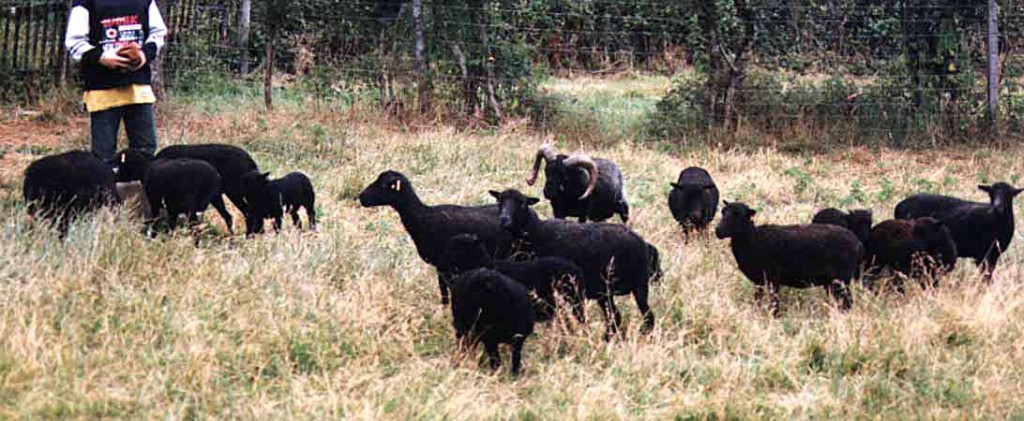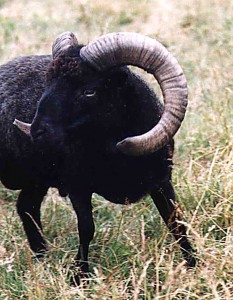Resisting to coldness as well as heat, the domestic sheep shows itself capable of valuing the poorest meadows : mountains, steppes, plains, islands… we also met him on all the continents and under all the latitudes. Devoid of aggressiveness, he lives in an organized herd which submits itself to the dominant male. In case of danger, the individuals gather in a compact group which flees. Mouflons do not try to defend their territory, they base their survival on nomadism. The rustic races preserved this capacity of walking. The mouflon passed on to sheeps a very developed sensibility: good sight, heard fine, and excel smell.
 The sheep spends a lot of time grazing by walking. The ruminant’s stomach is divided into four pockets of which the most voluminous is named the paunch. It stores the grass and assures a first decomposition of the cellulose in comparable products by fermentation. During the rest of the sheep this food is resurgited then slowly re-chewed. The fruit of this chewing will resume the road of the oesophagus, will pass in transit by the reticulum and the omasum to reach the rennet bag where the real attack with the gastric juice will begin . This specific digestion in the ruminating explains their inclination to lying rest.
The sheep spends a lot of time grazing by walking. The ruminant’s stomach is divided into four pockets of which the most voluminous is named the paunch. It stores the grass and assures a first decomposition of the cellulose in comparable products by fermentation. During the rest of the sheep this food is resurgited then slowly re-chewed. The fruit of this chewing will resume the road of the oesophagus, will pass in transit by the reticulum and the omasum to reach the rennet bag where the real attack with the gastric juice will begin . This specific digestion in the ruminating explains their inclination to lying rest.
 Recent studies and the chromosome analysis confirm that the domestic sheeps (Ovis aries) come mainly from the mouflon of Asia Minor ( Ovis musimon), the smallest of all the sorts of mouflons. The biggest being Marco Polo’s mouflon in Central Asia ( Ovis Ammon) with exceeding horns 1.9 m of length. Urial ( Ovis Orientalis) is classified in an intermediate size. As for the bighorn and for Dall’s mouflon, they represent North American variety show. And it is in Africa (Sahara) that one meets the mouflon with cuffs but it is not not a sheep. But the mouflon with cuffs is more a goat than a sheep.
Recent studies and the chromosome analysis confirm that the domestic sheeps (Ovis aries) come mainly from the mouflon of Asia Minor ( Ovis musimon), the smallest of all the sorts of mouflons. The biggest being Marco Polo’s mouflon in Central Asia ( Ovis Ammon) with exceeding horns 1.9 m of length. Urial ( Ovis Orientalis) is classified in an intermediate size. As for the bighorn and for Dall’s mouflon, they represent North American variety show. And it is in Africa (Sahara) that one meets the mouflon with cuffs but it is not not a sheep. But the mouflon with cuffs is more a goat than a sheep.
